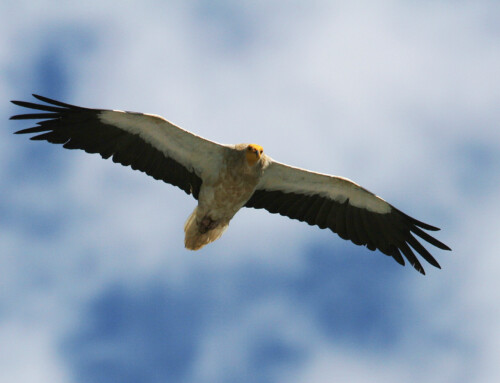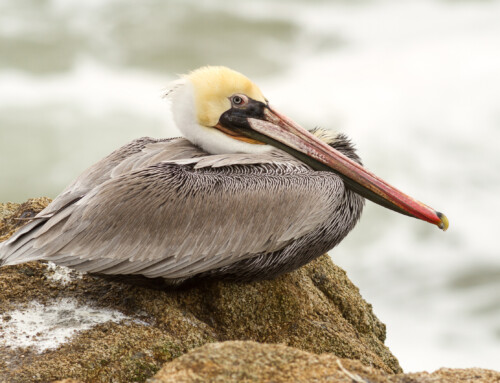Previous territory occupancy and successes are features of Peregrine recovery
LINKED PAPER
Territory occupancy and breeding success of Peregrine Falcons Falco peregrinus at various stages of population recovery. McGrady, M.J., Hines, J.E., Rollie, C.J., Smith, G.D., Morton, E.R., Moore, J.F., Mearns, R.M., Newton, I., Murillo-García, O.E. & Oli, M.K. IBIS. DOI: 10.1111/ibi.12443 VIEW
The effects on birds of organochlorine pesticides, like DDT or Dieldrin, posed a defining environmental challenge to a generation of biologists, conservationists, politicians and the wider public, during the 1960’s – 80’s. They caused declines through mortality and reduced productivity in a wide variety of birds, including predators like the Peregrine Falcon Falco peregrinus. Indeed, Peregrines were a cause célèbre around which the drive to ban organochlorine pesticides centred in the UK and elsewhere. Thankfully, the full story of organochlorine pesticides and Peregrines is one of qualified success, with Peregrine numbers being at historical highs in some places and its conservation status improving in most areas.
Peregrine Falcons have been monitored in Scotland since the 1940’s, including during the “bad old years” of the organochlorine era. That monitoring was mostly done by a dedicated group of enthusiasts who went into the field year after year, but professional ornithologists and ecologists also got involved (Mearns & Newton 1984, 1988), especially when populations had sunk to their lowest level (in the ‘60’s). In the UK, including in our study area of southern Scotland, Peregrines have switched from being a victim of organochlorine contamination to an example of recovery. Understanding mechanisms that underlie Peregrine population recovery provides insights into how populations of top predators might respond to anthropogenic perturbations to the natural environment.
We applied multi-state, multi-season occupancy models to data on Peregrines collected 1964-2015, a time frame that includes periods when Peregrine populations were low, recovering and deemed to have stabilized in much of the UK. The results paint a picture of recovery that suggested that “high quality” territories did well, and that successes built as time went by and organochlorine pesticides levels were reduced. Specifically we found that Peregrine territories that were occupied with successful reproduction in one year were much more likely to be occupied and successful in the following year compared to those that were unoccupied or occupied by unsuccessful breeders in the previous year, and that occupancy and reproductive success of such territories increased over time. Those findings were consistent with, and seemed to be the natural follow-on from results reported by Mearns & Newton (1988) for south Scotland.

Given the high level of breeding site fidelity shown by Peregrines (Mearns & Newton 1984, Tordoff & Redig 1997, Zuberogoitia et al. 2009, Smith et al. 2015), breeder quality and territory quality are almost certainly linked, with high quality (adult) breeders occupying high quality territories over multiple years. Barring some unexpected bias in pre-breeding mortality, such conditions will lead to the best breeders occupying the best territories producing the majority of recruits to the breeding population, a process found in many bird species (see Newton 1989).

Somewhat surprisingly, evidence for density-dependent effects on reproduction was weak in our study. However, factors that could cloud the situation are persecution and food availability. In the case of Peregrines, illegal persecution by game hunting interests, egg-collectors and pigeon fanciers occurs, but its spatial and temporal pattern is variable. Also, racing and feral pigeons were and still are a major food resource for many Peregrine breeding pairs, but the numbers of pigeons being raced is changing (declining) and their training and racing routes are changing, affecting their spatial distribution and availability to Peregrines.
We also found that the probability of occupancy differed between territories in the eastern and western parts of the study area, and varied over time, which may suggest that the effect of organochlorine pesticides on Peregrine varied geographically and that Peregrine occupancy and reproduction was affected by other factors such as persecution and/or weather.
References and further reading
Mearns, R. & Newton, I. 1984. Turnover and dispersal in a peregrine Falco peregrinus population. Ibis 126: 347–355. VIEW
Mearns, R. & Newton, I. 1988. Factors affecting breeding success of peregrines in south Scotland. Journal of Animal Ecology 57: 903–916. VIEW
Newton, I. (Ed.) 1989. Lifetime reproduction in birds. Academic Press. London.
Smith, G.D., Murillo-Garcia, O.E., Hostetler, J. A., Mearns, R., Rollie, C., Newton, I., McGrady, M. J. & Oli, M. K. 2015. Demography of population recovery: survival and fidelity of peregrine falcons at various stages of population recovery. Oecologia 178: 391-401. VIEW
Tordoff, H.B. & Redig, P.T. 1997. Midwest peregrine falcon demography, 1982-1995. Journal of Raptor Research 31: 339-346. VIEW
Zuberogoitia, I., Martínez, J.A., Azkona, A., Martínez, J.E., Castillo, I. & Zabala, J. 2009. Using recruitment age, territorial fidelity and dispersal as decisive tools in the conservation and management of peregrine falcon (Falco peregrinus) populations: the case of a healthy population in Northern Spain. Journal of Ornithology 150: 95-101. VIEW
Image credit
Featured image: Peregrine Falcon, Falco peregrinus © M McGrady
If you want to write about your research in #theBOUblog, then please see here.





